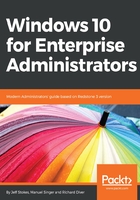
Traditional wipe and load
The well-known process of creating a golden image, syspreping it and deploying it to your clients, also known as wipe and load, will still be available with Windows 10 and still be supported in the near future.
To adapt your existing wipe and load process to the new Windows 10 OS, you just need to exchange your Windows Automated Installation Kit (WAIK) or Assessment and Deployment Kit (ADK) with the newest ADK provided by the latest Windows 10 release. This implies that your deployment solution is capable of handling the newest ADK version. Carefully check every modification to the golden image to see if it is still a supported setting or has been deprecated. Also see if the feature you are (re-)enabling is perhaps now disabled by default (for example, SMB1 support). This could be a hint for support in future versions.
Do not modify binary registry keys, also known as binary blobs, and use only documented registry keys, as with every new version, undocumented registry keys can change behavior or vanish, even with cumulative updates. As they are not officially documented, there needs to be no official warning or announcement.
If you want to provide an experience similar to in-place upgrades, you need more steps, more tools (for example, the User State Migration Tool), and possibly more external storage. In some rare cases, such as bulk app changes, you may need more time.
A down-level OS with lots of security mitigations like excessive use of ICACLS and other rights management tools to bend the security of the OS to comply with outdated or suboptimally programmed applications may also qualify for a wipe and load instead of an in-place upgrade, which will possibly carry on these changes.